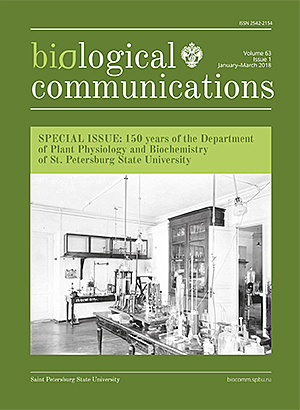Mining seed proteome: from protein dynamics to modification profiles
DOI:
https://doi.org/10.21638/spbu03.2018.106Abstract
In the modern world, crop plants represent a major source of daily consumed foods. Among them, cereals and legumes — i.e. the crops accumulating oils, carbohydrates and proteins in their seeds — dominate in European agriculture, tremendously impacting global protein consumption and biodiesel production. Therefore, the seeds of crop plants attract the special attention of biologists, biochemists, nutritional physiologists and food chemists. Seed development and germination, as well as age- and stress-related changes in their viability and nutritional properties, can be addressed by a variety of physiological and biochemical methods. In this context, the methods of functional genomics can be applied to address characteristic changes in seed metabolism, which can give access to stress-resistant genotypes. Among these methods, proteomics is one of the most effective tools, allowing mining metabolism changes on the protein level. Here we discuss the main methodological approaches of seed proteomics in the context of physiological changes related to environmental stress and ageing. We provide a comprehensive comparison of gel- and chromatographybased approaches with a special emphasis on advantages and disadvantages of both strategies in characterization of the seed proteome.
Keywords:
food safety, LC-MS, post-translational modifications, proteomics, seed quality
Downloads
References
Downloads
Published
How to Cite
License
Articles of Biological Communications are open access distributed under the terms of the License Agreement with Saint Petersburg State University, which permits to the authors unrestricted distribution and self-archiving free of charge.





